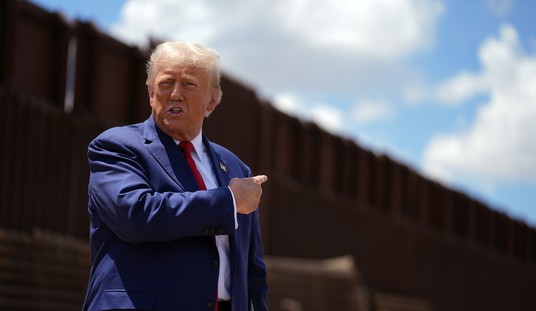Now you tell us. As the nation begins to debate when to bring back some economic normalcy, New York Gov. Andrew Cuomo wondered aloud yesterday whether it should have stopped in the first place. Locking the healthy with the exposed carriers may have backfired by accelerating the spread of the coronavirus, at least in hot spots like New York City.
“If you re-thought that or had time to analyze that public health strategy,” Cuomo told reporters, “I don’t know that you would say ‘Quarantine everyone.’” So what would Cuomo do the next time around, and what does he plan to do now?
https://www.youtube.com/watch?v=VsZgVRAweHM
Sweeping statewide quarantine orders may not have been the most effective strategy to combat the coronavirus, Gov. Andrew Cuomo conceded on Thursday, as he weighed plans to restart the economy.
“We closed everything down. That was our public health strategy,” said Cuomo during an Albany press briefing. “If you re-thought that or had time to analyze that public health strategy, I don’t know that you would say ‘Quarantine everyone.’”
It’s the third day in a row that Cuomo has publicly mused about quarantines and how best to eventually restart the Empire State’s shattered economy. …
“I don’t even know that that was the best public health policy. Young people then quarantined with older people, [it] was probably not the best public health strategy,” he said. “The younger people could have been exposing the older people to an infection.”
Cuomo has been critical of Donald Trump’s efforts to direct the national conversation back to the economy, as Jazz pointed out this week. When Trump first brought it up, Cuomo pushed back hard against the economic calculation. “It’s lives,” Cuomo said, “it’s grandmothers and grandfathers and sisters and brothers.” The “one or two percent of the population” that Cuomo estimates will die if exposed to the virus made economic inactivity worth the cost, he declared on Tuesday, prompting Jazz’ rebuttal.
Now, though, Cuomo also sounds more and more concerned about whether the economic impact might outweigh the benefits of continued lockdown. Broader testing is the key, Cuomo says, but some people should probably get back to work now, and maybe shouldn’t have been prevented from doing so in the first place. “It’s not we’re going to either do public health or we’re going to do economic development,” Cuomo told reporters. “We have to do both … and I think that’s the same thing the federal government is working through.”
Actually, the strategy might have been correct, argues Johns Hopkins epidemiologist Dr. Jonathan Ellen — for New York, anyway, and other hot spots. In an essay at National Review, Ellen writes that one national policy does not work for a pandemic like COVID-19. Shelter-in-place orders make sense in densely populated cities like NYC, but not as much for other areas. What the US needs is a multitude of approaches in order to provide a balance between public health and economic health:
Right now, we are largely analyzing the little data we have on a nationwide scale. Instead, we should focus our efforts to stabilize our nation’s health-care system on a region-by-region basis. Most importantly, we need to separate our thinking about hotspots from our thinking about non-hotspots and adapt our responses accordingly.
Hotspots are areas where COVID-19 is currently prevalent or expected to become widespread in the near future. Today that’s the metropolitan areas of New York City, Los Angeles, Seattle, San Francisco, and New Orleans.
It is highly unlikely that these regions will be in a position to lift restrictions in just two weeks, and that should not be the aim of our policy there. Instead, the goal should be stability, plain and simple. We must ensure that local health-care systems and personnel have all the resources they need to care for COVID-19 patients while simultaneously managing the workload of patients with other acute or life-threatening conditions. This requires surging manpower, facilities, supplies, and tests, while also safeguarding the physical and emotional well-being of overwhelmed front-line workers. …
Fortunately, most Americans still do not live in areas likely to be overwhelmed by COVID-19. For residents of states with a more manageable number of cases and with epidemiological profiles less likely to lead to uncontrollable spread, this national panic may seem excessive or counterproductive. However, efforts in non-hotspot areas are just as crucial to fortifying our nation’s health-care system.
In these areas, stability means vigilance and, most critically, testing. We must have confidence that everyone who the CDC says should get a COVID-19 test can get one. Success here means that the number of infection cases per 100,000 residents would remain low and not grow exponentially.
This is where federalism offers the best option for tailored responses. So why hasn’t it worked out that way, at least not yet? The need for widespread availability of testing has not yet been met, so governors don’t have much data specific to their own states on which to base those decisions. The only data they do have is that from the hotspots, where the testing has been prioritized for understandable reasons. In the absence of better data, they are taking the advice from the CDC to minimize risk, understandably so, but at potentially unnecessary economic cost.
This is why mass-producing tests is just as high a priority as masks and ventilators. Until we get better data, we won’t get better decision-making.
Addendum: Cuomo tells the press today that testing is getting more intense in New York, better per capita than China or South Korea. It’s not helping the death count, however, which continues to escalate:
New York's latest coronavirus numbers, from Cuomo:
*138,376 tests conducted
*44,635 confirmed cases
*519 deaths https://t.co/ocBDOZspI5 pic.twitter.com/oeEVzKWhrR— CBS News (@CBSNews) March 27, 2020








Join the conversation as a VIP Member